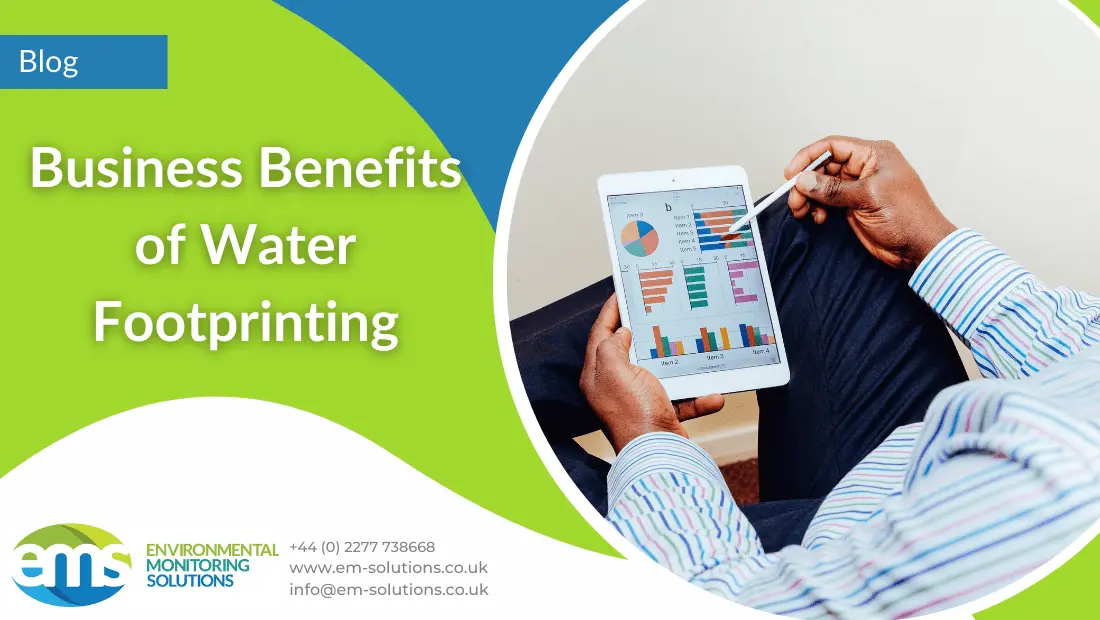Would my Business Benefit from Water Footprinting?
16 February 2022

In last week’s blog we looked at what a water footprint entails, how a water footprint assessment is carried out and the types of water footprint that exist. In this blog we are discussing why water footprinting is becoming increasingly important and what the benefits are for businesses.
Why Do We Need Water Footprinting?
In October 2021, the Environment Agency (EA) chief warned that the impacts of climate change, such as hotter, drier summers and less predictable rainfall, will lead to an increased risk of drought and water shortages in the UK.
As we begin to experience such climate change impacts, the EA chief argues for a greater focus to be placed on monitoring water quantity alongside quality. The Environment Agency estimate that summer rainfall is expected to decrease by 15% by the 2050’s in England, and by up to 22% by the 2080s; and that by 2100 the south-east will increasingly see temperatures above 35°C, and sometimes 40°C. (gov.uk).
With a growing population we need to remain conscious of our environmental impacts stemming from our domestic, commercial, and industrial water usage. It is increasingly important to build resilience to these risks.
There are limitations to each population’s carrying capacity, including the availability and distribution of freshwater. Different countries have different supplies of freshwater, and depending on their rate of replenishment and usage, each has varying degrees of water scarcity. (slate.com) This is where water footprinting becomes essential. Water scarcity footprinting is a variation on water footprinting, and can be defined as the consumption of “scarce water” i.e., freshwater consumption weighted by water stress index. (rdmc.nottingham.ac.uk)
Across the globe we produce 400 million tons of packaging each year. This is created to keep food fresh, preventing food loss and protecting clothes, electronics and other goods during transportation and storage. This puts intense pressure on water resources in countries involved in producing raw materials and manufacturing, equivalent to between 650 and 800 billion cubic meters of water annually. (waterfootprint.org) While populations continue to increase, we also divert more and more freshwater from natural aquatic environments to supplement agricultural practices, leading to many species facing habitat loss or disruption.
Business Benefits of Water Footprinting
A water footprint assessment is an excellent way of gathering baseline data which can then inform objectives and targets internally and along the supply chain for a business. Water footprinting will be essential in developing strategies to cope with future water stresses, especially if the goods produced or the activities carried out are water intensive. This could, for example, act as a step towards reducing the company’s reliance on freshwater water sources and make it more resilient in future climates.
Water footprint assessments can also be beneficial when considering the life cycle of an organisation’s products, services and/or activities (as is a requirement of the International Standard ISO 14001:2015.)
Moreover, your water footprint assessment can help you to identify ways to reduce your environmental impact. Enhancing your green credentials, a water footprint assessment can also help you to meet increasingly high customer expectations, as you proactively manage your environmental responsibility and demonstrate social and environmental accountability.
Water Footprinting further benefits business by improving process efficiency. For example, it can provide information to help in identifying and tackling leaks. Understanding of the effectiveness of your current water practices, you can take the next step is to evaluate, or audit, your technology.
Are there Limitations of a Water Footprint?
A water footprint gives you a more comprehensive picture of your company’s water usage than traditional metering methods. However, other data will be necessary to create a full picture of your environmental and social impacts, such as water stress indices. With disruptive climate impacts on the horizon, data from a water footprint, which has been put into context, can inform water strategies and business continuity plans. Otherwise, it can be hard to make direct comparisons between water footprints. For example, an imported agricultural product may have a lower blue water footprint than a domestic equivalent, but without evaluating the environmental impact of the groundwater drawdown in the place where the imported product is grown, it is not known which is preferable.
Further illustrating the importance of putting your water footprint values into context, in an area that requires lower (more stringent) levels of regulated pollutants, pollutant concentrations will give higher grey water footprints than elsewhere, which could be misleading if attempting to make comparisons. (globalwaterforum.org)
Putting your data into context and consulting with water experts can help you gain a deeper insight into the ramifications of your water consumption.
Do you see room for improvement in your company’s water usage?









